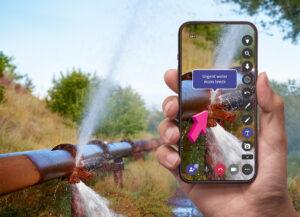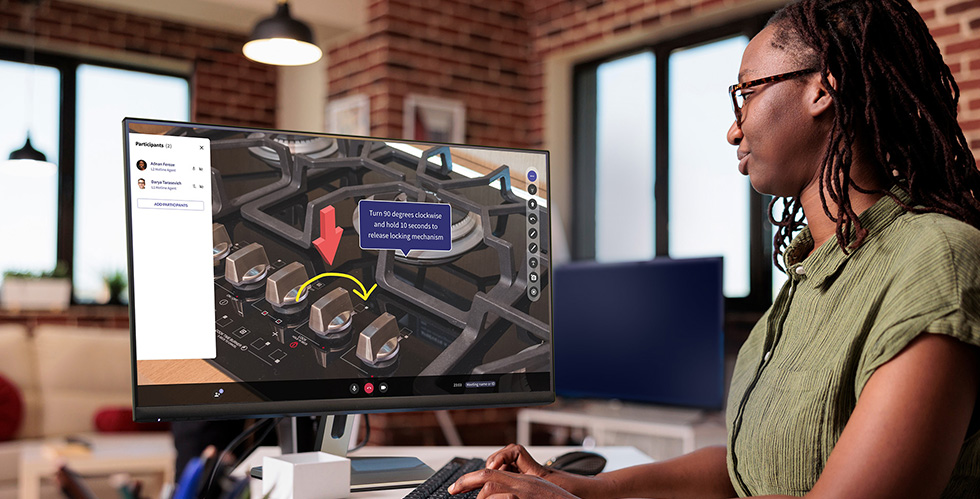Implementation can often be the biggest challenge when introducing a new tool or technology into your organization. Yet, with the right strategy and lessons learned from real-world use cases, you can carefully plan and seamlessly implement your AR remote assistance rollout.
In this blog, we’ll share five essential keys to success for AR remote assistance rollout. Whether you’re just starting or looking to refine your approach, these actionable insights will help your organization maximize efficiency and user adoption. Read on to discover how AR remote assistance can reduce costs, enhance productivity, and empower teams.
#1 Define Clear Goals from the Start
AR remote assistance is a powerful tool, but its success hinges on defining clear-cut goals from the outset. Before purchasing or implementing visual assistance technology, take a close look at your workflows and identify existing pain points. Are service call times too long? Is technician dispatching costly and inefficient? Use these challenges to shape your objectives and key performance indicators (KPIs).
For example, if reducing average handle time (AHT) is a priority, set a realistic yet impactful KPI to achieve. Ensure your team understands these goals and how the tool addresses them. By tying remote assistance to tangible business outcomes, you create a roadmap for success and ensure alignment across teams.
#2 Complement, Don’t Overhaul, Existing Workflows
One of the biggest mistakes organizations make is attempting to dismantle their existing processes entirely. Instead, tools like CareAR Assist work best when they enhance current workflows.
Start by identifying areas where remote visual guidance can alleviate friction without causing major disruptions. For example, integrating visual assistance into your field service management system or ticketing platform enables a seamless experience for your teams. CareAR Assist, for instance, offers out-of-the-box integration with tools like ServiceNow and Salesforce. By minimizing disruption, your team is more likely to embrace technology and see immediate value.
#3 Engage and Excite Your Team
A tool’s success ultimately depends on the people using it. That’s why gaining team buy in and fostering enthusiasm are critical steps. Include key users in the decision-making process, from demos to pilot programs. Early adopters can serve as champions, encouraging others to embrace the tool.
Incentivize engagement with simple rewards like gift cards or gamification. One organization using CareAR created a leaderboard to track usage, fostering friendly competition among team members. This approach not only fosters team spirit and drives adoption, but also ensures the tool remains a vital part of daily workflows.
#4 Measure Success with KPIs
After implementing AR remote assistance, it’s essential to measure its impact using predefined KPIs. CareAR Assist customers tracked KPIs such as these and reported impressive outcomes such as:
- Reduced Call Time: An HVAC support team reduced call durations by 30% by enabling remote experts to visually guide customers.
- Improved First Time Fix Rate (FTFR): An IT field service team increased its FTFR to 74% by solving Level 1 and Level 2 issues remotely, saving costs and reducing downtime.
- Deflected Dispatches: A support organization eliminated 40,000 dispatches in six months by troubleshooting remotely.
- CSAT Scores: A customer success team achieved a 94% satisfaction rate, highlighting the tool’s value to end users.
These measurable successes reinforce the value of AR technology and provide a foundation for continuous improvement.
#5 Expand Usage and Iterate Over Time
Success doesn’t stop with initial implementation. Once you’ve achieved your goals, explore new opportunities for visual remote assistance within your organization. Evangelize its success internally to encourage adoption by other teams.
Additionally, continue gathering feedback from users. Visual remote assistance tools often make parts of existing workflows redundant or outdated, so be prepared to refine processes based on user input. Flexibility and a willingness to iterate ensure that your organization maximizes the tool’s potential over time.
AR Remote Assistance Rollout with CareAR® Assist
 Visual remote assistance bridges the gap between remote experts and those needing guidance by combining live video and AR technology. With tools like CareAR Assist, organizations can reduce costs, enhance communication, and improve customer satisfaction. Features such as multi-party sessions, wearable device support, session recording, and seamless integration make CareAR Assist a versatile and powerful solution, creating lasting value for your operations.
Visual remote assistance bridges the gap between remote experts and those needing guidance by combining live video and AR technology. With tools like CareAR Assist, organizations can reduce costs, enhance communication, and improve customer satisfaction. Features such as multi-party sessions, wearable device support, session recording, and seamless integration make CareAR Assist a versatile and powerful solution, creating lasting value for your operations.
Ready to learn more about how these five best practices have made a difference for customer implementations? View our webinar “No Half Measures: Don’t Break Bad When Rolling Out AR Remote Assistance” for more valuable insights. Watch Now.
